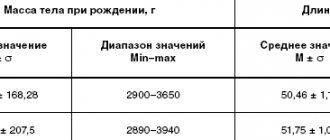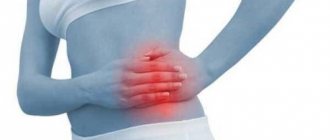The article was prepared by a specialist for informational purposes only. We urge you not to self-medicate. When the first symptoms appear, consult a doctor.
The mucous membrane, which facilitates the digestion and absorption of nutrients, lines the inner surface of the gastrointestinal tract. To protect against mechanical injury and the effects of acids and alkalis, its cells secrete mucus that envelops the stomach and intestines from the inside.
What does white mucus in stool mean?
When the mucous membrane is injured and inflamed, mucus secretion increases. In its normal state, mucus is not noticeable in feces; it mixes evenly with feces. In case of irritation of the mucous membrane, an increased amount of mucus can be easily determined by visual inspection of defecation products during a coprogram.
Coprogram is a stool examination that allows you to determine the state of the gastrointestinal tract, the presence of digestion and absorption processes, diseases of the stomach and intestines.
Parameters determined by the coprogram:
- Color and consistency of feces;
- The presence of epithelium, starch, mucus;
- Number of red blood cells and white blood cells;
- The presence of connective tissue, muscle fibers;
- Volume of iodophilic flora, fatty acids.
The color and structure of mucus found in feces depends on the cause of its hypersecretion and the nature of the damage:
- Yellow and green mucus - the presence of a bacterial process, an admixture of pus;
- Transparent mucus - catarrhal inflammation;
- An admixture of blood, a pinkish tint of mucus - the presence of an ulcer of the mucous membrane, hemorrhagic inflammation.
Causes of white mucus in stool
Depending on the cause of mucus hypersecretion, its consistency and treatment of the pathological process depend.
Factors influencing the appearance of mucus in stool:
- ARVI.
With a respiratory infection caused by adeno- and enterovirus, parainfluenza viruses, catarrhal inflammation of the intestinal wall occurs. In addition, the patient swallows mucous discharge from the nasopharynx. Mucus in feces during ARVI has a transparent consistency and its volume is small. To treat this condition, antiviral drugs are prescribed - Interferon, Arbidol.
- Side effects of certain medications and products.
A small amount of clear mucus may appear as a result of taking NSAIDs, anti-flatulence medications, smoking, or drinking coffee. After discontinuation of the above drugs, the condition returns to normal.
- Intestinal infectious diseases.
Bacterial infections provoke the release of large amounts of mucus of varying structure and consistency. With salmonellosis, a small amount of mucus accompanies frequent swamp-colored stools. With dysentery, the mucus turns green and contains pus and blood. During a staph infection, mucus accompanies frequent, foamy, bloody stools.
Treatment of intestinal infections is taking drugs from the nitrofuran group (Furazolidone, Ersefuril, Eneterofuril) or from the cephalosporin group.
- Viral intestinal infections.
With colienterocolitis, yellow mucus with whitish impurities is found in the stool against a watery yellow-green background. With rotavirus infection, which causes impaired absorption and digestion, mucus accompanies frequent stools with symptoms of dehydration. Therapy - taking Viferon, Kipferon, rehydration drugs (Hidrovit, Regidron), solutions for parenteral administration.
- Parasitic infections.
Mucus in the stool during helminth infections is accompanied by frequent stools mixed with blood and abdominal pain. Additionally, decreased appetite, anemia, and allergic manifestations are diagnosed. Therapy for parasitic infections is carried out with Mebendazole, Niridazole, Piperazine, Meironidazole, Tinidazole, Chloxyl.
- Candidiasis.
The entry of mycelium of the fungus of the genus Candida into the intestinal lumen causes the release of white mucus into the stool. Treatment is taking Griseofulvin, Amphotericin.
- Autoimmune inflammation of the intestine (ulcerative colitis, Crohn's disease).
Mucus with blood and pus is released against the background of diarrhea, fever, and pain along the intestines. Treatment is taking drugs from the group of cytostatics, glucocorticoids, sulfalazines.
- Spastic colitis.
Mucus with blood is accompanied by constipation and diarrhea with a spastic component. Treatment – intestinal sanitation with Enterofuril, Furozolidone, taking antispasmodics, probiotics, Enterol.
- Dysbacteriosis.
The picture of intestinal contamination with clostridia includes mucus against a background of unstable stool, abdominal pain, and loss of appetite. Treatment of the disease is carried out with intestinal antiseptics (Furazolidone, Enterofuril, Metronidazole), probiotics (Linex, Bifiform, Bifikol, bifidumbacterin).
- Raw food diet, fasting.
Dietary disorders cause depletion of the mucous membrane, its atrophy and irritation with rough food, which provokes the release of copious amounts of mucus.
- Pancreatitis.
Hypersecretion of mucus is caused by irritation of the mucous membrane by a large number of pancreatic enzymes. Treatment – infusion of Furosemide, Diacarb, enzyme intake, diet, surgery.
- diverticulosis
.
Bulging of the intestinal wall causes brown mucus accompanied by slight bleeding in the small intestine. Therapy is surgical treatment after sanitation of the intestines and restoration of its microflora. - Proctitis, proctosigmoiditis.
Mucus and blood in the stool appear along with pain against the background of irritation from enemas, chemical and mechanical damage. Therapy - antibacterial, anti-inflammatory drugs, antispasmodics and laxatives.
- Malignant intestinal tumors.
With oncological damage to the intestines, mucus mixed with blood appears in the stool against the background of intestinal obstruction and chronic pain syndrome. Treatment is removal of the tumor, radiation and chemotherapy.
1. Hematochezia or blood in the stool
What does blood in stool indicate?
The diagnosis of hematochezia is made when there are traces of blood in the stool. Any entry of blood into the digestive system affects the color and consistency of the stool. Minor bleeding may go undetected and is only detected by laboratory testing of stool for occult blood. Significant volumes of blood are clearly visible. The stool turns bloody in color from light pink to black. By its appearance, one can guess in which parts of the intestine blood enters the digestive tract. The closer the bleeding site is to the rectum, the brighter and lighter the color. Conversely, black stools indicate a violation of the blood vessels of the stomach or upper parts of the small intestine. Dark, bloody stools are called “melena,” while “hematochezia,” as a rule, is diagnosed when traces of fresh blood are detected, which for one reason or another enters the stool in the immediate vicinity of the rectum.
Causes and signs of anal bleeding
Hematochezia is often temporary, as it occurs under the influence of non-dangerous episodic phenomena. Blood can get into digested food after nosebleeds if some of it is swallowed. Rough food can also provoke injury to intestinal vessels. Such bleeding looks like streaks of blood in the stool. They are not dangerous because the intestinal mucosa is quickly restored.
Sign up for a consultation
At the same time, it is worth understanding that the systematic appearance of blood in the stool may indicate serious diseases. We can say that rectal bleeding is associated with organic disorders based on a number of signs that, in one or another combination, appear cyclically or continuously:
- pain in the intestinal area, in the lower back;
- general weakness as a result of blood loss;
- diarrhea or constipation;
- anemia;
- headache;
- cold extremities;
- fever, weakness, sweating;
- vomit;
- bloating.
Possible causes of intestinal bleeding that turns stool red are quite varied. The regular appearance of blood in the stool always indicates serious disorders, many of which require urgent treatment and can even be life-threatening. The most common causes of hematochezia:
- haemorrhoids;
- abscesses, fissures, ruptures of the anus;
- polyps on the intestinal mucosa;
- acute or chronic diverticulitis;
- colitis and general intestinal infections;
- ischemic enterocolitis (impaired blood supply to the large intestine of inflammatory origin);
- ulcers and erosions of the large intestine;
- malignant neoplasms.
Internal bleeding can also be caused by increased fragility of blood vessels, hematological diseases and taking medications that reduce blood clotting.
A must read! Help with treatment and hospitalization!
Causes of white mucus in the stool of a newborn
Immediately after birth, the gastrointestinal tract of the newborn is sterile. In the first days of life, it is populated by microorganisms, the biocenosis of which contains both valuable lacto- and bifidobacteria, as well as saprophytes and conditionally pathogenic microorganisms.
During the first 2-3 weeks of a baby's life, a balance is established between different types of bacteria in his intestines. Transitional stool contains mucus and has a greenish tint. Once equilibrium is established, the consistency of the stool may change, as well as its color and frequency.
Factors influencing the appearance of mucus in the stool of an infant:
- Intestinal dysbiosis.
The predominance of enterobacteria, clostridia, Staphylococcus aureus, Klebsiella over lactic acid bacteria causes flatulence, constipation, and the release of large amounts of mucus streaked with blood. If the mucus takes on a reddish tint, this is a sign of ulceration on the mucous membrane. Therapy for dysbacteriosis - taking Enterofuril, bacteriophages, Stop-Diara, a course of treatment with probiotics (Linex, Normoflorin, Bifiform, Primadophilus). To prevent relapses of dysbacteriosis, you need to carefully care for your baby.
- Bacterial and viral intestinal infections.
When salmonella, dysentery bacillus, or toxic infections are introduced into a child's body, inflammation of the intestinal mucosa develops. This circumstance causes the release of a large amount of mucus with clots. Diagnosis of infections - bacteriological culture of stool. These conditions are dangerous because the child can quickly die from dehydration caused by diarrhea and vomiting.
- Medicines for flatulence.
Antifoam medications (Bobotik, Espumisan, Bebicalm) can imitate mucus in the stool of an infant. After stopping the medication, mucus is no longer noticeable.
- Violation of the rules for introducing complementary foods.
Introducing certain vegetables into your diet can cause you to pass a large amount of stool. The consistency of the stool changes, it becomes liquid or, conversely, denser, and turns green.
- Lactase
deficiency.
Deficiency of the enzyme lactase, which ferments milk, causes fermentative dyspepsia. Its symptoms are the release of a large amount of mucus, an admixture of milky inclusions in the stool, gases, loose stools, and abdominal pain. Diagnosis - examination of stool for carbohydrates, treatment - diet for a nursing mother, administration of lactase preparations to the infant; for artificial feeding, a lactose-free formula is chosen. - Allergies, atopic dermatitis.
External manifestations in the form of weeping skin, peeling of the skin of the cheeks, may be accompanied by irritation of the intestinal mucosa. As a result, an increased amount of mucus is released.
- Runny nose.
Swallowed mucus from the nasopharynx enters the intestines and is diagnosed in the stool of a child who cannot blow his nose independently.
- Intestinal invaginitis.
When part of a child’s intestines is compressed by another part, severe pain, vomiting, and loose, bloody stools mixed with mucus appear. A day after the first symptoms of intestinal vaginitis appear, the feces turn into lumps of mucus mixed with blood. Emergency assistance from a surgeon is required - a barium enema to straighten the intestines, otherwise the child may die from painful shock.
Diagnosis of hematochezia
If you have blood-stained stools, you can contact the following specialists:
- gastroenterologist;
- proctologist;
- surgeon;
- therapist.
Based on existing complaints, the patient is prescribed a comprehensive examination, the purpose of which is to identify the cause of blood getting into the stool. You need to be prepared to clearly and completely describe the picture of the disturbing disorders: the appearance and consistency of stool, the nature and frequency of pain, associated digestive problems, medications taken, the presence of hemorrhoids and gastrointestinal diseases in the family.
The examination plan may include the following medical measures:
- manual rectal examination;
- stool occult blood test;
- blood analysis;
- coloscopy and rectoscopy;
- Ultrasound diagnostics;
- esophagogastroduodenoscopy;
- CT and angiography.
Based on the data obtained, the doctor makes a diagnosis and identifies the exact cause of hematochezia. It is possible to make a reliable prognosis for rectal bleeding only by understanding the basis for the regular entry of blood into the intestines. As a rule, further treatment combines measures aimed at reducing bleeding and therapy for the disease that caused the appearance of blood in the stool.
Visit our Gastroenterology page











